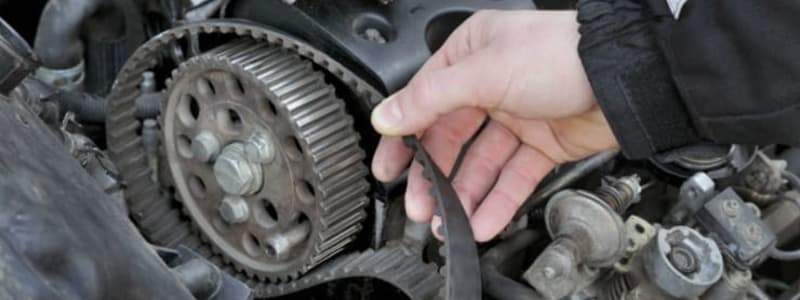
27 March 2015, 12:15
Replacing the timing belt on your car is not the most difficult of procedures to carry out yourself, but it is vitally important that you get it just right. If the tension in the belt is not perfect then it might not get the grip necessary to transfer the power from one shaft to another or it could fly off and cause more damage inside your engine.
Get quotes for a Timing belt Job
Steps to Replace a Snapped Timing Belt
- Purchasing the correct belt. Your owner’s manual should tell you the specification of timing belt that your car needs, but if it doesn’t, just go along to your nearest car parts dealer armed with the make and model of your car, along with the year it was made in and the engine type and size. If you know that there are different variations of the model of car that you have the VIN will help dealers to find exactly the right belt for you.
- Gaskets. Whilst getting hold of the belt it is also a good idea to buy some new gaskets and gasket adhesive. The supplier of your timing belt should know which ones you are likely to need.
- Disconnect the battery. To make sure that you don’t suffer any nasty electrical shocks whilst you are working on your vehicle, disconnect the negative battery cable from its terminal. There is no need to remove the entire battery; just breaking the circuit will be enough to keep you safe. Remember that you may need to enter a code to regain access to your in-built electrical devices such as radios and Sat-Navs when you reconnect the battery later on.
- Remove the alternator belt. The alternator belt is a smaller belt which is usually located on top of or in front of the timing belt. You will need to loosen the nuts in order to create slack to be able to take the belt off. On some makes and models of car it will also be necessary to remove the serpentine belt. If it is in the way then you will need to take it off.
- Accessories. There are quite a few car accessories such as the power steering pump and the air conditioning compressor which will often prevent you from gaining direct access to your timing belt. Remove all of these by loosening the nuts and taking care to remember what goes where. You shouldn’t have to remove any pressurised fittings, so take care not to discharge any pressurised systems. This could cause a lot of problems later on.
- Distributor cap. If your car has a distributor cap then you will need to remove it. This may involve prying apart some very stubborn clips but there will also be screws holding it in place so make sure that you remove these too. (A lot of modern cars which have electric ignitions do not have a distributor. If you are unsure as to whether or not your car has one, consult your owner’s manual which should have all the information you need).
- Timing marks. Rotate the crankshaft bolt so that the timing mark aligns with the 0 on the timing scale. You will need a spanner to do this.
- Screws and bolts. Remove all of the screws and bolts which hold in the timing cover in position. Take the cover off completely (it may come in two parts).
- Alignment. Check that the crankshaft and the camshaft timing marks are properly aligned. You should find that there are dots or lines on both the pulleys and the shaft heads which should be lined up. Make sure that the corresponding marks are in the right place.
- Leaks. Make sure that there are no leaks of oil or water around the area in which you are going to be working.
- Belt tensioner. Loosen the bolts which hold the belt tensioner in place to create slack which will allow you to slide the old timing belt off.
- New belt. Position the new belt in place and make sure that you torque it according to the correct specifications laid out in your manual.
- Reassemble. Once your new belt is in place and correctly tensioned, replace all of the parts of the car which you had previously removed in reverse order to the way in which you took them off. Test drive. Start the engine and drive slowly around some quiet roads to check that the timing belt has been correctly fitted and that there is no other damage to the car’s engine.
Get quotes for a Timing belt Job






